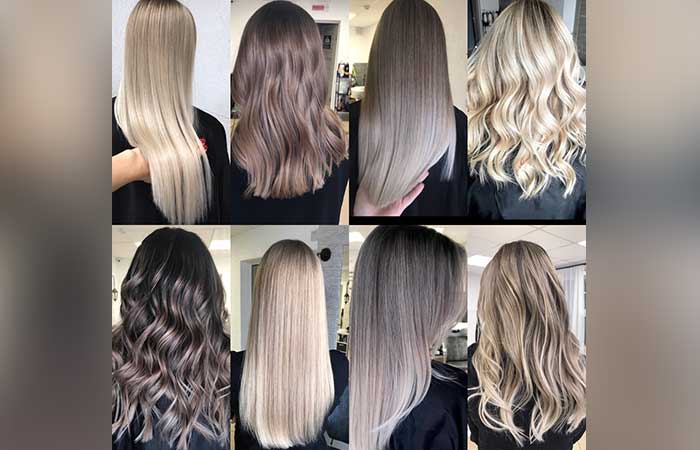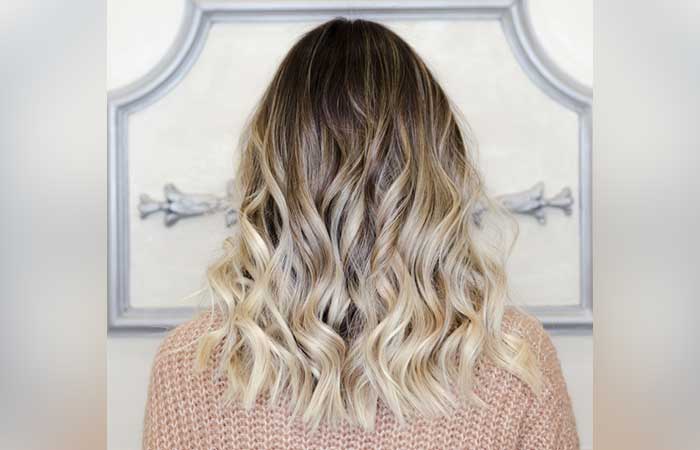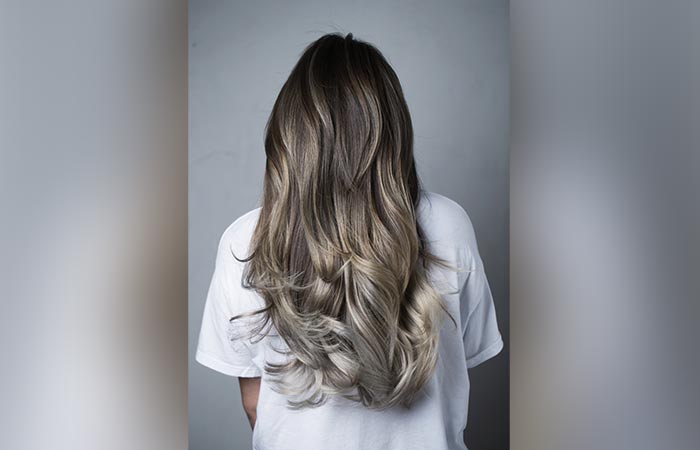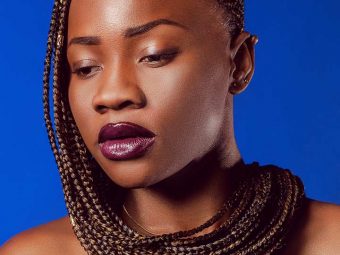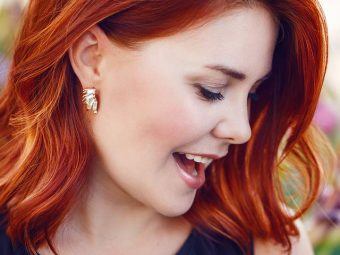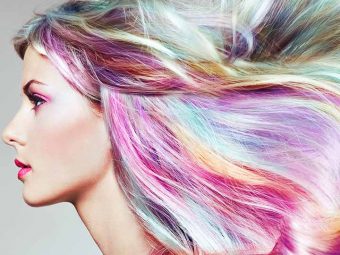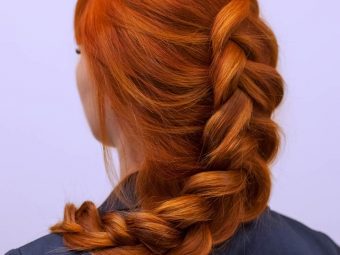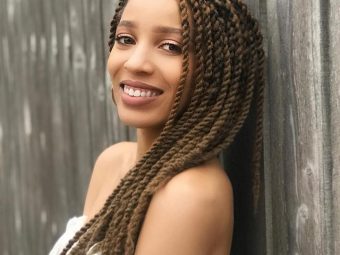Ombre Vs. Balayage: Types And Difference
Before changing the hair color, learn all the details each technique entails.

One fine morning, you woke up and found your feed bombarded with the never-ending stream of #ombre vs. #balayage pictures. Perhaps it has not stopped since then! This trend just keeps on going, and rightly so. These trending colors look attractive and flow smoothly. But the main confusion for most of us is they appear unusually similar. If you face the same problem and look for a solution, you have come to the right place. Read on to know the difference between ombre and balayage.
In This Article
What Is Balayage?
Shutterstock
A balayage is a coloring technique where color is painted onto the hair with a brush to create a flowing effect. This highlighting technique is different from the classic foil coloring technique. This transforms the hair, creating a classic swept-away color blend and a natural gradient effect.
It is often suggested for blonde and brunette hair, but depending on the color choice, balayage can work with any natural hair color. Balayage is easy to maintain as the color is lighter at the roots and gets heavier at the hair ends.
Shutterstock
The coloring technique allows you to explore your options. You may go for full-color highlights covering every hair section or partial highlights that only cover a few layers at the top. One of the best examples of the balayage technique is the sun-kissed hair color trend.
Origin
Balayage (pronounced: buh-lie-ahze) is a French word meaning “to sweep” or “paint.” It originated at the Carita Salon in Paris during the 70s and was originally called Balayage à Coton as, at that time, cotton strips were used to separate colored hair sections. It gained attention during the late 90s and then took the world by storm.
Types Of Balayage
The two variations of the balayage technique include:
- Foilayage Method: In this technique, the hand-painted hair is folded in tinfoil and left to process. This is normally used to color naturally dark hair as the foil traps the heat and oxidizes the hair faster.
- Flamboyage Method: This technique uses adhesive strips to saturate the hair color on individual hair sections to lighten and enhance the natural hair color. It gives the hair a reflective or slightly oil-slick look.
How Long Does It Take? It can take anywhere between an hour to three hours, depending on the coverage.
When To Choose This Technique: If you want a naturally swept color blend where lighter shades organically bleed into darker shades or vice versa (depending on your natural hair color). You should go for this if you are looking for a low-maintenance color and natural look.
When Not To Choose This Technique: If you have colored hair or color pigment buildup on the strands (due to frequent dyeing), do not go for balayage. Avoid it if you have brassy hair or are in a hurry and cannot dedicate the desired time.
In the next sections, we have explored ombre hair and how it is different from the balayage. Read on to know more!
What Is An Ombré?
Shutterstock
An ombré is a two-toned coloring technique where a darker shade flows into the lighter shade, creating a gradient effect. The darker shade is often the hair’s natural color, or you may choose to color it a few shades darker. The lighter shade at the hair ends is usually blonde or a light brown hue. This coloring technique can be used with bright colors like red, blue, green, and purple to add more edge.
Origin
Ombré is a French word (pronounced: Ohm-bray) meaning “shade” or “shadow.” It originated in 2008 during the recession to color the hair without spending too much money.
Types Of Ombré
The two variations of this coloring technique are:
1. Sombre
Shutterstock
It is a softer blend of colors and uses mostly pastel and lighter shades to create a subtle gradient effect.
2. Color Melting
Shutterstock
This technique may involve two or three colors to create a more colorful look.
How Long Does It Last? With the right care and regular touch-ups, an ombré can last up to three months.
When To Choose An Ombré: Go for ombré if you want to highlight your natural hair color or want a dramatic look with a natural feel with bold colors.
When Not To Choose An Ombré: While an ombré is easy to maintain, it looks great on healthy hair. Ombré requires bleaching the hair. If you have dry and damaged hair with split ends, it can cause severe damage.
Still confused? Here are the basic differences between the two hair color techniques simplified for you.
The Difference Between Balayage And An Ombré
The basic difference between an ombre and the balayage is that one is a hair coloring trend, while the other is a hair coloring technique. Balayage is a highlighting technique and gives a natural and softer ombré. On the other hand, an ombré amplifies your natural hair color or is used to add drama to your locks.
Want to know which one is more pocket-friendly? Scroll down and check the average cost.
Balayage Or Ombré: Which Costs More?
A salon may charge anywhere between $100 and $250 for an ombré. A balayage will cost you between $50 and $200. The prices may differ based on these factors:
- The Hair Length: The price for coloring shorter and medium hair will be lesser than longer hair.
- Coverage: Full highlights are costlier than partial highlights.
- Brand: Some famous salons might have a higher price than local salons. Some even charge based on the expertise and experience of the colorist.
- Additional Charges: Additional treatments like bleaching (to remove existing color) or other hair treatments will affect the overall cost.
A balayage is a coloring technique used to achieve an ombre look, while an ombre is a two-toned coloring trend. And you must know the exact difference between balayage and ombre before changing your hair color. When you pair the right ombre colors with the balayage technique, you can achieve shiny and silky hair with volume. Don’t forget to discuss color choices with your hairstylist if you want to get this result. We hope this article cleared all your doubts about balayage and ombre techniques in detail.
Frequently Asked Questions
Is balayage or ombre better for straight hair?
Both balayage and ombre look good for straight hair. However, Balayage will look more natural on wavy hair. So, the ombre effect looks great on straight hair and gives a dramatic look.
Which is more damaging – ombre or balayage?
Balayage requires fewer hair strands. Therefore, you require less bleach to highlight them. So, balayage is less damaging than ombre.
Can you do both balayage and ombré?
Balayage is the technique, and ombre is the style. Therefore, if you are doing ombre, you use the balayage technique.
Key Takeaways
- While a balayage is a coloring technique done to create a flowing effect, an ombré involves two tones of colors where the darker shade is gradually followed by a lighter one.
- Combining both the techniques can make your hair look voluminous and shiny.
- A proper discussion should be done with the hairstylist to choose the right colors.



